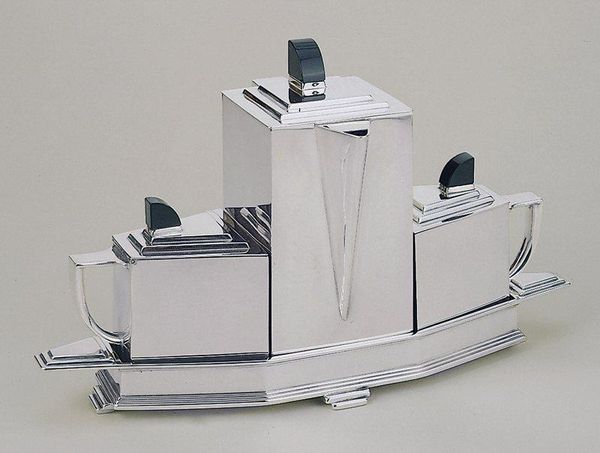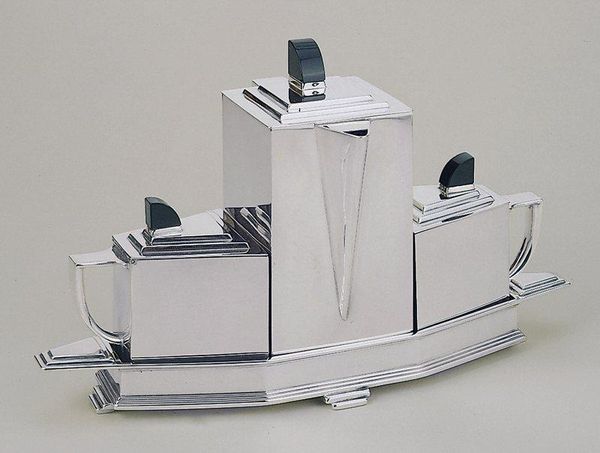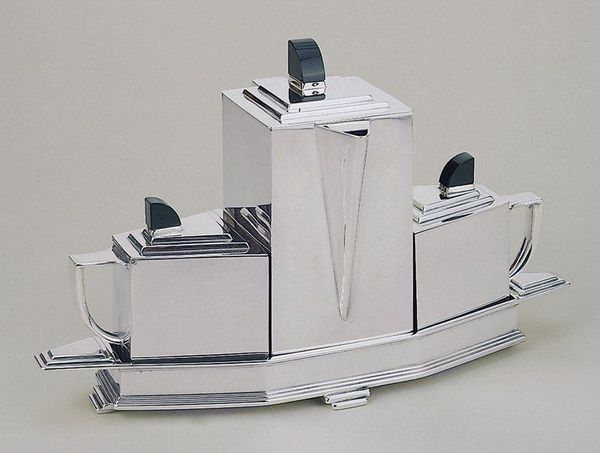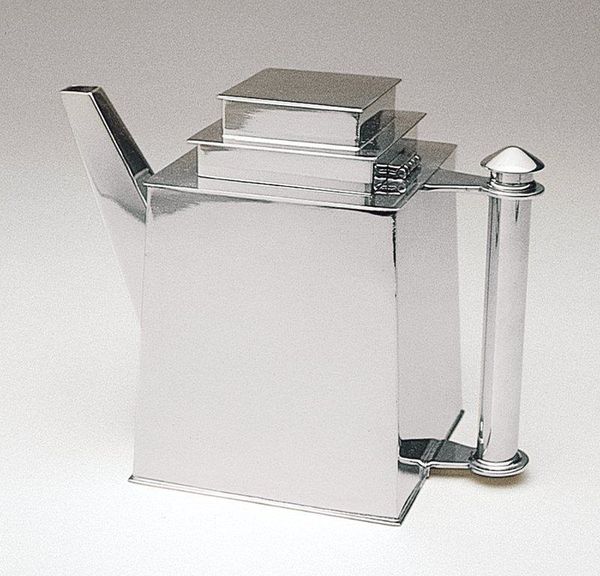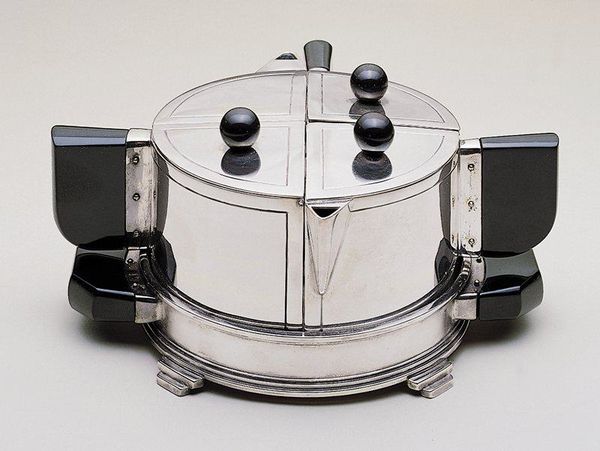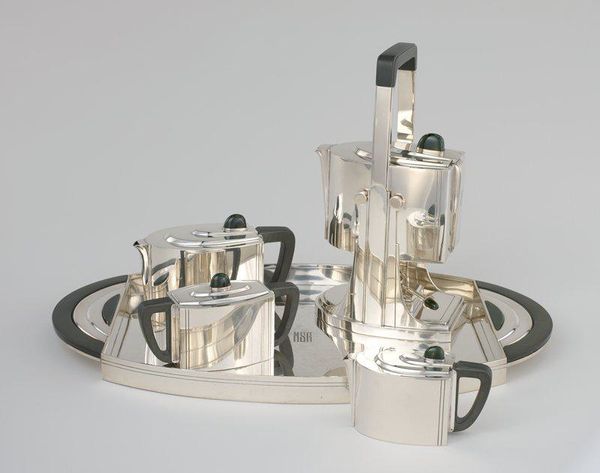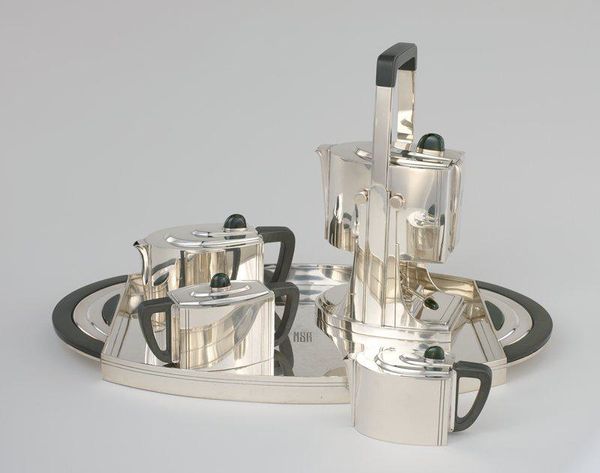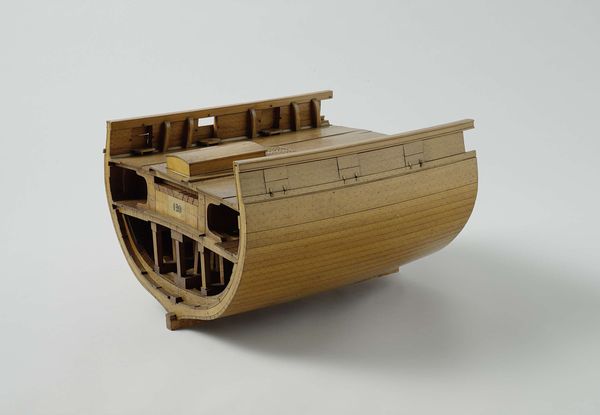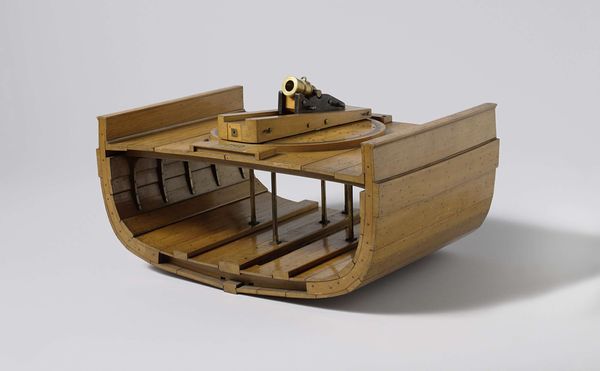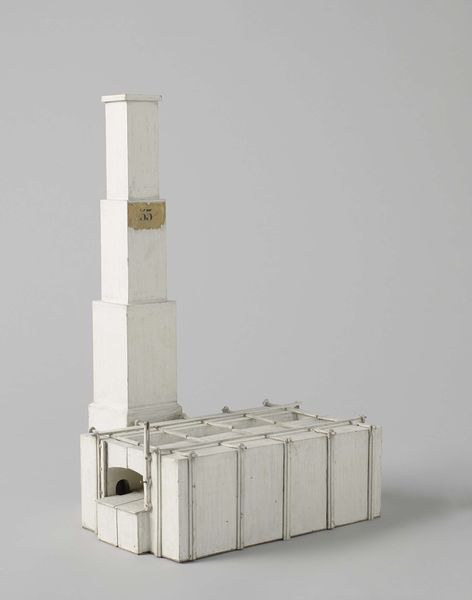
metal
#
art-deco
#
metal
#
united-states
#
decorative-art
Dimensions: 4 3/4 x 4 1/2 x 3 1/2 in. (12.07 x 11.43 x 8.89 cm)
Copyright: No Known Copyright
Curator: Editor: Here we have Jean Theobald's "Creamer from a Tea Service," created in 1928. Made of metal, it really embodies the Art Deco style. I’m struck by the sharp geometric forms. What do you make of it? Curator: Immediately, the repetitive forms tell a story of mass production techniques. It’s American decorative art, but think about what "American" means in the 1920s. It signifies an industrial powerhouse striving to break from European tradition. Editor: So you see the materials and manufacturing as essential to understanding its artistic value? It isn't necessarily about craft as much as it’s about how things are made accessible through manufacturing processes? Curator: Exactly! We see the value shifting from the hand-crafted object to the machine-made one. Think of the social implications – who could afford this, how would its consumption impact the working class creating such pieces? This cream jug isn't just a pretty object, it represents the socio-economic structure of its time. Do you see any influence of architectural design, maybe of skyscrapers, since it was created in 1928? Editor: Yes! The stepped details remind me of buildings. It feels like a miniature modernist city, a skyscraper scaled down to fit on a tea table. Do you see the mass production influencing decorative choices, moving towards simplification? Curator: Without a doubt. Decoration becomes streamlined, adapted for efficiency. No longer the heavily ornamented styles of previous eras, here materials like chrome and new synthetics become hallmarks of a machine age aesthetic, affecting labor, materials and class distinctions. It seems simple, but its manufacturing reflects the huge socio-economic shifts that shaped that era. Editor: I never considered a cream pitcher as a document of material culture, thank you for enriching my view. Curator: It goes to show that everyday objects can be historical texts if you know how to read them!
Comments
No comments
Be the first to comment and join the conversation on the ultimate creative platform.
